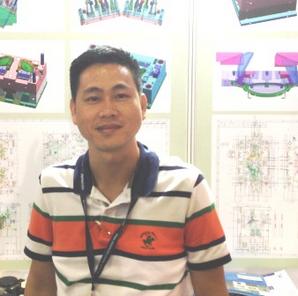By Kent Miller
CORRESPONDENT
Published: September 23, 2014 12:05 pm ET
Updated: September 23, 2014 12:08 pm ET

Image By: AsiaMold
About 250 mold maker attended this year's AsiaMold.
GUANGZHOU, CHINA — Reshoring may be a hot topic in U.S. manufacturing circles, but the mid-level and small players putting in appearances at this year’s AsiaMold in Guangzhou were taking a wait-and-see approach.
“Reshoring won’t have much impact this year — maybe next,” said Merry Liu, sales manager of Shenzhen-based PE Mould Industrial Ltd.
With an export-centric business model, PE Mould generates less than 5 percent of revenues from domestic sales. More than 60 percent of its $9 million in sales in 2013 came from the American market, and about half those sales were to the auto industry.
Equally sanguine was David Wang, general manager of auto molds specialist Taizhou Huangyan Meiding Mould Co. Ltd., which operates under the Plasmolde brand: “I don’t think there’s going to be much impact because the market is so huge.”
Outweighing reshoring as a concern for Wang was the difficulty in getting U.S. visas. Despite netting $1.5 million stateside out of $10 million in total sales last year, Wang plans to build on momentum in emerging markets. It has already topped $8 million in annual sales to Brazil, Russia and Mexico.
Cici Tu with Zhuhai Gree Daikin Precision Mold Co Ltd. cited China’s price advantage: “If America makes the mold, their costs are very high, but if they send the designs to a Chinese supplier, we can make the molds much cheaper.”
Zhuhai Gree Daikin supplies a joint venture of two air-conditioning giants — China’s Gree Electric Appliances and Japan’s Daikin Industries — which netted it about 25 percent of its $48 million sales in 2013 from U.S. buyers.
PE Mould’s Liu struck a common theme, that staying afloat in the ultra-competitive Chinese mold-maker market.
Conceding similar quality among Chinese makers, Liu said PE Mould plans to stand out by improving results and cutting turnaround times, which average one week for design and three weeks to build a mold.
“We want to promote customer satisfaction by better communication.”
At Shenzhen Ad-Mould Co., business manager Jack Liu was opting for an aggressive export-oriented strategy that blends foreign trade shows with online B2B marketing.
“The customer has a lot of choices. So, we’re going to shows in Germany and the U.S.”
In 2013, Shenzhen Ad-Mold garnered 80 percent of its $160 million sales from the United States and Europe, almost all to the automotive and appliance industries.
Smaller firms felt stymied by big foreign firms’ reliance on purchasing through China and Hong Kong-based agents.

Image By: Kent Miller
Hawk Y.N. Xie of Yeye Plastic co.
“We lose a lot of profit margin because of the agents,” said Hawk Y.N. Xie, general manager at Yeye Plastic Co., which recorded $7 million in sales in 2013.
Yie cited labor costs as a particularly vexing challenge. Based in pricey Shenzhen, Yeye’s average monthly salary is likely to top 5,000 RMB (about $819) next year, Xie said.
“Many of the [domestic] mold-makers will disappear in the next three to five years,” he flatly declared.
The high cost of going through agents was also a concern at Shenzhen Ango Mould Co. Ltd., with $7 million in sales in 2013. Manager of marketing Amy Han reports having only one direct customer stateside: Panasonic USA, for whom it makes molds for vacuum cleaner parts.
“That’s one of our best customers. We wish we could have more like that,” Han said.
Despite being sideswiped by Typhoon Kalmaegi, show attendance for the first two days was about 12,000, up 7.5 percent from last year, said Louis Leung, deputy general manager of show organizer Guangzhou Guangya Messe Frankfurt Ltd. However, the number of international visitors (which includes those from Hong Kong and Taiwan), was flat at 1,800.
Several vendors expressed disappointment at the low turnout from overseas buyers. "Maybe we won't come here again,” said Shenzhen Ad-Mold’s Jack Liu.
About 250 mold makers manned booths at this year’s show, up from 225 last year and 120 in 2007, the first year of the show, Leung said. | 